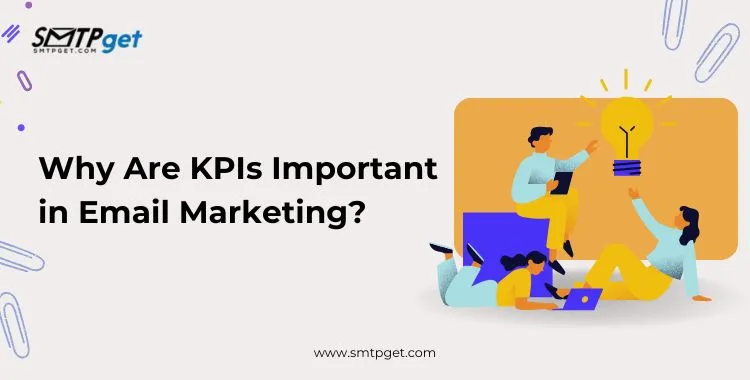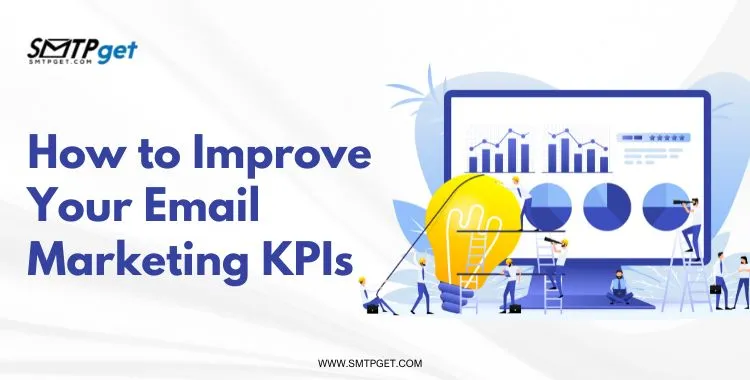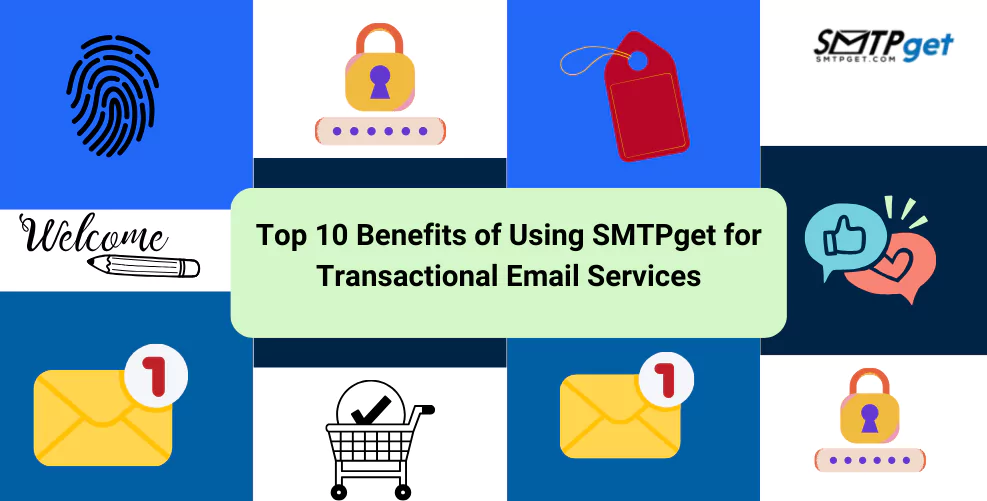Email marketing is one of the most effective and affordable digital marketing strategies available today. Whether you’re running an eCommerce store, a SaaS company, or a nonprofit organization, email marketing can help you reach your audience, nurture relationships, and drive measurable results. But how do you know if your email marketing campaigns are working? The answer lies in Email Marketing KPIs.

In this detailed guide, we will explore everything you need to know about email marketing KPIs, including essential email marketing metrics, a practical Email marketing KPIs template for tracking, and real-life Email marketing KPIs examples.
What Are Email Marketing KPIs?
Email Marketing KPIs (Key Performance Indicators) are measurable values that show how effectively a campaign is achieving key business objectives. In email marketing, KPIs are used to track the success of email campaigns based on specific goals such as engagement, conversions, list growth, or customer retention.
Tracking these email marketing KPIs helps marketers understand what works and what doesn’t, optimize strategies, and make data-driven decisions to improve future campaigns. These email marketing metrics give you actionable insights into performance and help you align your efforts with your goals.
Why Are KPIs Important in Email Marketing?
Without tracking performance metrics, you’re essentially sending emails blindly. Here are key reasons why email marketing KPIs are vital:

- Measure Campaign Success: Understand how your campaigns are performing through essential email marketing metrics.
- Identify Weak Points: Discover areas that need improvement (e.g., subject lines, content, design).
- Improve ROI: Make changes that lead to higher conversions and revenue.
- Support Decision-Making: Use data like Email marketing KPIs examples to plan future strategies.
Top Email Marketing Metrics to Track
Here are the most critical email marketing KPIs you should track regularly:
1. Open Rate
- Definition: The percentage of recipients who opened your email.
- Formula: (Emails Opened / Emails Delivered) x 100
- Importance: Indicates how compelling your subject line and sender name are.
- Benchmark: A good open rate is between 20% to 30% depending on industry.
2. Click-Through Rate (CTR)
- Definition: The percentage of recipients who clicked on at least one link in your email.
- Formula: (Total Clicks / Emails Delivered) x 100
- Importance: Shows how engaging your content is and helps evaluate email marketing KPIs.
- Benchmark: Average CTR is around 2% to 5%.
3. Click-to-Open Rate (CTOR)
- Definition: Percentage of recipients who clicked on a link after opening the email.
- Formula: (Total Clicks / Emails Opened) x 100
- Importance: Measures content relevance and effectiveness as a part of email marketing metrics.
4. Bounce Rate
- Definition: Percentage of emails that couldn’t be delivered.
- Formula: (Bounced Emails / Emails Sent) x 100
- Types:
- Soft Bounce: Temporary delivery issue (e.g., full inbox).
- Hard Bounce: Permanent delivery failure (e.g., invalid address).
- Benchmark: Should be below 2%.
5. Unsubscribe Rate
- Definition: The percentage of people who opted out of your email list.
- Formula: (Unsubscribes / Emails Delivered) x 100
- Importance: Indicates dissatisfaction with content or frequency.
6. Conversion Rate
- Definition: Percentage of email recipients who completed a desired action (purchase, sign-up, download).
- Formula: (Conversions / Total Clicks) x 100
- Importance: Measures ROI and campaign effectiveness.
7. Spam Complaint Rate
- Definition: Percentage of recipients who marked your email as spam.
- Formula: (Spam Complaints / Emails Sent) x 100
- Importance: High spam complaints can affect deliverability and sender reputation.
8. List Growth Rate
- Definition: How quickly your email list is growing.
- Formula: ((New Subscribers – Unsubscribes) / Total Subscribers) x 100
- Importance: A healthy list is crucial for long-term success.
9. Email Sharing/Forwarding Rate
- Definition: Percentage of recipients who shared your email with others.
- Importance: Indicates highly valuable or engaging content.
10. Revenue Per Email
- Definition: Average revenue generated per email sent.
- Formula: Total Revenue / Total Emails Sent
- Importance: Key metric for eCommerce and sales-driven email marketing KPIs.
Email Marketing KPIs Template
You can use a spreadsheet or marketing dashboard to track the following email marketing KPIs:
| Campaign Name | Sent | Delivered | Open Rate | CTR | CTOR | Bounce Rate | Unsub Rate | Conversion Rate | Revenue |
|---|---|---|---|---|---|---|---|---|---|
| Product Promo | 10,000 | 9,850 | 24% | 6% | 25% | 1.5% | 0.3% | 4% | $4,500 |
| Newsletter | 7,500 | 7,400 | 27% | 3.2% | 12% | 0.5% | 0.2% | 1.5% | $1,200 |
| Cart Recovery | 3,000 | 2,950 | 40% | 10% | 30% | 0.3% | 0.1% | 7% | $2,700 |
Use this Email marketing KPIs template for consistent campaign tracking and optimization. An Email marketing KPIs template provides a clear picture of what’s working and where improvements are needed.
Email Marketing KPIs Examples
Email Marketing KPIs (Key Performance Indicators) are essential metrics that help you measure the success of your campaigns. From open rates to conversion rates, these KPIs give a clear picture of how your emails are performing. By looking at real examples, like the ones below, you can better understand what works, what doesn’t, and how to improve future campaigns for better engagement and higher revenue.

Example 1: Welcome Series
Objective: Increase user engagement.
Metrics:
- Open Rate: 45%
- CTR: 8%
- CTOR: 18%
- Conversion Rate: 5%
Insights: Great subject lines and relevant intro content worked well and are clear Email marketing KPIs examples.
Example 2: Flash Sale Email
Objective: Generate quick sales.
Metrics:
- Open Rate: 32%
- CTR: 12%
- Conversion Rate: 6%
- Revenue: $7,000
Insights: Sense of urgency and clear CTAs led to higher sales, making this a valuable Email marketing KPIs example.
Example 3: Abandoned Cart Campaign
Objective: Recover lost revenue.
Metrics:
- Open Rate: 48%
- CTR: 15%
- Conversion Rate: 10%
- Revenue: $3,200
Insights: Automated reminders and incentives drove conversions. A powerful email marketing KPIs example to learn from.
How to Improve Your Email Marketing KPIs
Email Marketing KPIs are key to understanding how well your campaigns perform. Improving these metrics helps you reach more people, boost engagement, and increase conversions.

1. Optimize Subject Lines
Use action words and personalization to improve email marketing metrics.
A/B test different formats to enhance Email marketing KPIs.
2. Segment Your List
Divide users based on behavior, location, or preferences for better email marketing KPIs.
3. Personalize Content
Include recipient’s name and product recommendations.
Personalized emails drive better email marketing metrics.
4. Improve Design and Mobile Responsiveness
Use responsive templates.
A mobile-friendly layout boosts Email marketing KPIs.
5. Use Clear CTAs
Tell users exactly what you want them to do.
Strong CTAs lead to better email marketing KPIs.
6. Test Send Times and Frequency
Schedule emails based on user behavior to improve email marketing metrics.
7. Clean Your List Regularly
Remove invalid emails to lower bounce rate and improve Email marketing KPIs.
8. Monitor Feedback and Analytics
Understand user actions to refine future Email marketing KPIs templates and strategies.
Conclusion
Tracking Email Marketing KPIs is essential for improving campaign effectiveness. The right email marketing metrics help you spot what’s working, what needs fixing, and how to better connect with your audience. Using an Email marketing KPIs template, you can easily monitor each campaign and learn from every Email marketing KPIs example.
Start now by implementing these metrics, templates, and examples to supercharge your email marketing strategy.
FAQs related to Email Marketing KPIs
This FAQ section covers the most common queries to help you track, understand, and improve your email campaign performance.
What are Email Marketing KPIs?
Email Marketing KPIs are measurable values used to track the performance of your email campaigns based on specific business goals like engagement, conversions, and revenue.
Why are Email Marketing KPIs important?
They help measure success, identify weak spots, and optimize your strategy using actionable email marketing metrics.
Which are the most important email marketing metrics to track?
Key metrics include Open Rate, CTR, CTOR, Bounce Rate, Unsub Rate, Conversion Rate, and Revenue Per Email.
What is a good open rate for email marketing?
A healthy open rate usually ranges from 20% to 30%, depending on your industry and audience.
How is Click-to-Open Rate (CTOR) different from CTR?
CTR shows clicks vs. total emails delivered, while CTOR compares clicks to the number of emails opened—a more content-focused KPI.
What is an Email marketing KPIs template?
It’s a structured format (often a spreadsheet or dashboard) used to consistently track key email marketing metrics like sent, delivered, CTR, and revenue.
How can I reduce bounce rates in email marketing?
Maintain a clean email list, verify addresses regularly, and use double opt-in to reduce hard and soft bounces.
How do I improve my email marketing conversion rate?
Focus on personalized content, clear CTAs, mobile-friendly design, and optimized landing pages to boost conversions—key parts of improving Email Marketing KPIs.
What is considered a good Email Marketing CTR?
A good click-through rate usually ranges from 2% to 5%, but it can vary depending on your campaign type and industry.
Can I use real Email marketing KPIs examples for planning my strategy?
Yes, studying real-life Email marketing KPIs examples helps you understand what works and how to apply it to your campaigns.
How do I know if my email marketing is profitable?
Track revenue per email and conversion rates using an Email marketing KPIs template to assess ROI.
What is the average unsubscribe rate in email campaigns?
A typical unsubscribe rate is below 0.5%. Higher rates may indicate irrelevant content or too many emails.
How often should I review my Email Marketing KPIs?
You should analyze your email marketing metrics after every campaign and at least once a week for active campaigns.
How can segmentation help improve Email Marketing KPIs?
Segmenting your email list allows for targeted messaging, which leads to higher engagement and better overall email marketing metrics.
Where can I find a ready-to-use Email marketing KPIs template?
You can create one using Excel, Google Sheets, or email marketing tools like Mailchimp, HubSpot, or GetResponse that offer built-in KPI dashboards.








